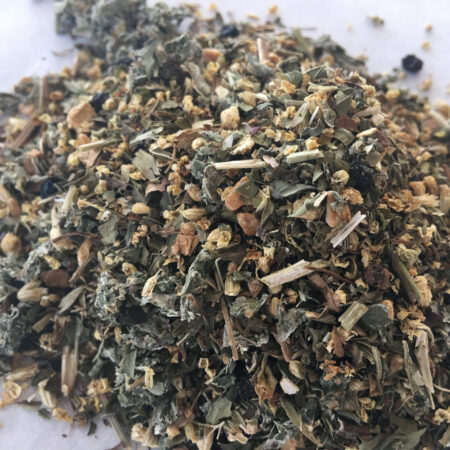Your cart is currently empty!
Osmanthus
$18.00
Parts used: Dried capitulum
TCM category: Herbs that Resolve Dampness and Promote Qi Circulation
TCM nature: Cool
TCM taste(s): Bitter, Sour
Organ affinity: Stomach, Uterus
Scientific name: Rubus Idaeus
Other names: Gui Hua
Quantity: 30g
The Herbal Remedy formulates products with ONLY the highest quality bioavailable, organic, and wild-crafted ingredients.
This product contains ZERO chemicals, animal products, GMOs, fish, soy, wheat, gluten, corn, dairy, lactose, eggs, yeast, sugar, solvents, alcohols, binders, flavors, additives, preservatives, coloring, fragrance, silicone, and BPA.
These statements have not been evaluated by the Food and Drug Administration. This product does not intend to treat, diagnose, cure, or prevent any disease. Consult your physician or health care provider before using any herbal products.
Out of stock
Description
Osmanthus is a beloved tea, seasoning and decorative herb with a lovely scent and flavor. Osmanthus gets its name from the Greek words osma, meaning “fragrant”, and anthos, meaning “flower”. It was considered so precious in ancient times that it was only used to make perfumes for the Emperor. It is still China’s national flower. The flowers are harvested in the autumn around the moon festival season. The leaves are used to perfume tea and the tree’s fruit are edible. It is the flowers that are most frequently used medicinally to promote healthy skin, lower blood pressure, counter stress, and reduce inflammation. The flower is full of antioxidants that promote health and support lung, kidney, and liver function. It is popularly used by seniors to aid a weak digestive function. It helps to remove excess nitric oxide from the body, reducing the risk of cancer and diabetes.
Key Constituents: Polyphenols, Eugenol, Geraniol, Carotene (including trans-alpha, trans-beta, and neo-beta carotenes), Vitamin B3, Magnesium, Manganese, Cobalt, Molybdenum, Selenium.
Medicinal Uses: Stomach cramping, menstrual cramps, insomnia, sunburn, acne, sluggish digestion, gas, cancer, stress, anxiety, poor appetite. Enhance skin tone, acne, aging, dry skin, eyesight, detoxify the liver and kidneys, digestion, gas, intestinal cramping, menstrual cramping, sore dry throat, excess saliva in the mouth and throat, halitosis, suppress appetite, lower blood pressure, arthritis, asthma due to phlegm and retained fluid in the lungs, wheezing, allergies, toothache.
Key Actions: Tonifies Kidneys, Cleanses the Liver, Dissipate Stasis, Resolves Phlegm, Reduces Inflammation, Supports the Lungs, Antioxidant, Anti-inflammatory, Digestive, Sedative, Relaxant, Antispasmodic, Anti-aging, Anti-allergic, Neuro-protective, Antitumor, Antimicrobial
Uses: Tea, Seasoning, Decoration






Reviews
There are no reviews yet.